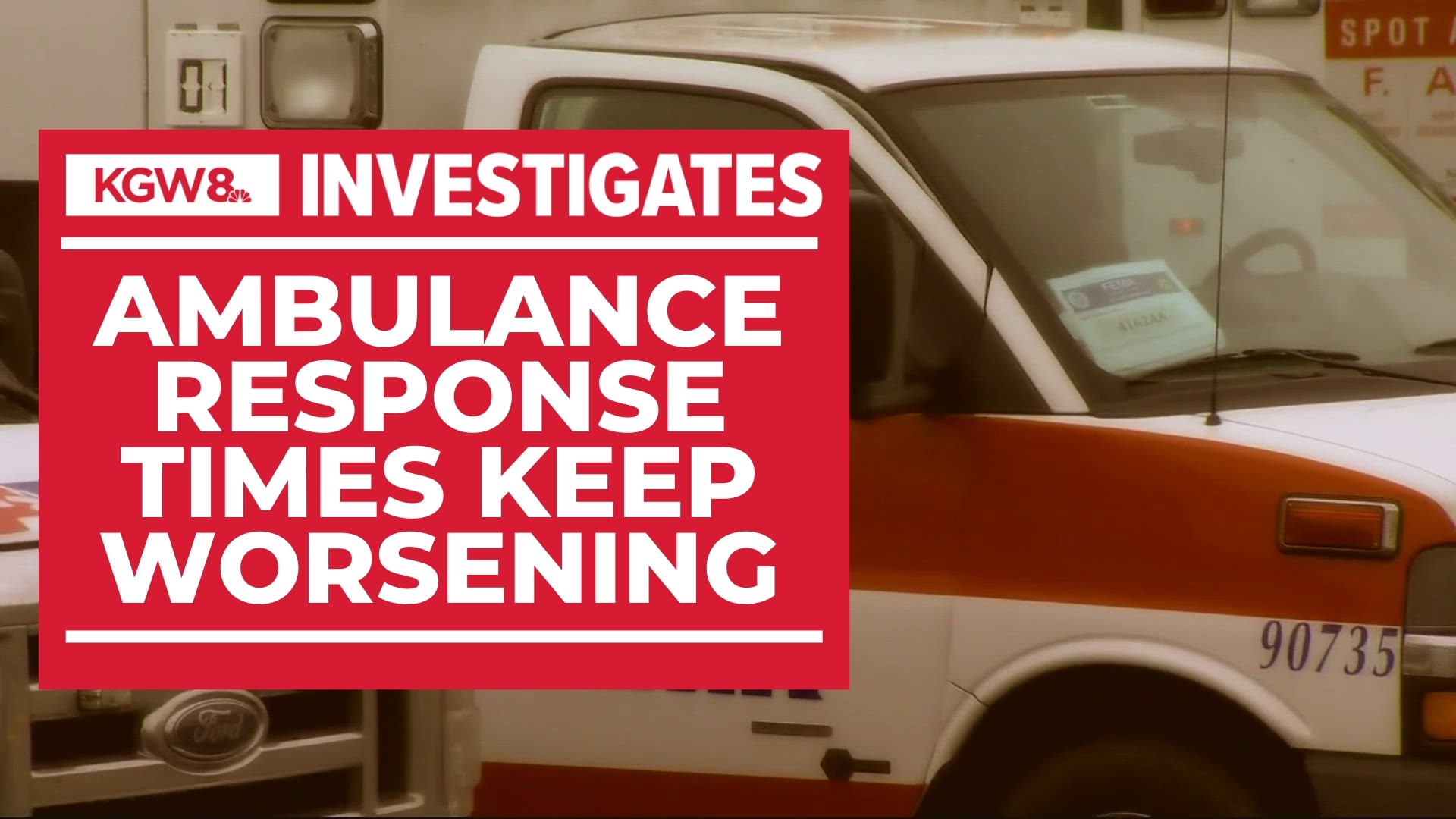MULTNOMAH COUNTY, Ore. — Multnomah County ambulance crews — operated by the county's EMS provider American Medical Response — are getting worse at responding to emergencies on time, according to standards set by the county and AMR.
New data from Multnomah County EMS, first reported by Willamette Week, shows a drop-off in 911 response times over the last six reported months.
From September to February, about one out of every three ambulances failed to respond to life-threatening Code 3 emergencies within eight minutes.
The 911 response times struggles are not unique to Multnomah County.
Ambulance providers AMR and Metro West have pointed to a shortage of paramedics, saying that staffing issues are causing delays.
While both Multnomah County and AMR agree that EMS crews should get to 90% of emergency calls on time, they disagree about how to fix the current problems.
AMR wants to lower the standards for its staffed EMS workers by hiring Emergency Medical Technicians, or EMTs.
"Moving to a standard EMT/Paramedic staffing model would quickly solve the staffing challenges faced by AMR Multnomah County, thereby improving ambulance response times," said an AMR spokesperson in a statement to KGW.
EMTs have less training and qualifications than paramedics. They'd also be paid a lower rate, which could potentially save AMR money.
However, for decades Multnomah County has stuck by a 2-paramedic requirement for its ambulance crews, saying it creates better care.
"It is the way the EMS is configured, we need the right resources at the right place at the right time," said Dr. John Jui, Multnomah County EMS Medical Director. "I can tell you if I have two trained paramedics with you having a cardiac arrest, they're going to do a better job than one medic, guaranteed."
The county and AMR are trying one new strategy to address the 911 response time issues.
On April 17, AMR deployed its first Basic Life Support ambulance, staffed by two EMTs rather than two paramedics. This BLS system is designed to respond to minor, low-acuity calls.
The intent is to relieve some of the burden on Advanced Life Support (2-paramedic) crews, thereby boosting response times.
On May 1, the Bureau of Emergency Communication launched its queue services for these types of calls — an effort to triage out calls to the appropriate ambulance teams, even if Multnomah County doesn't allow paramedics to work alongside EMTs.
Jui said it may take months to see if the new BLS system is having any effect on response times while EMS providers work out the dispatching process.

